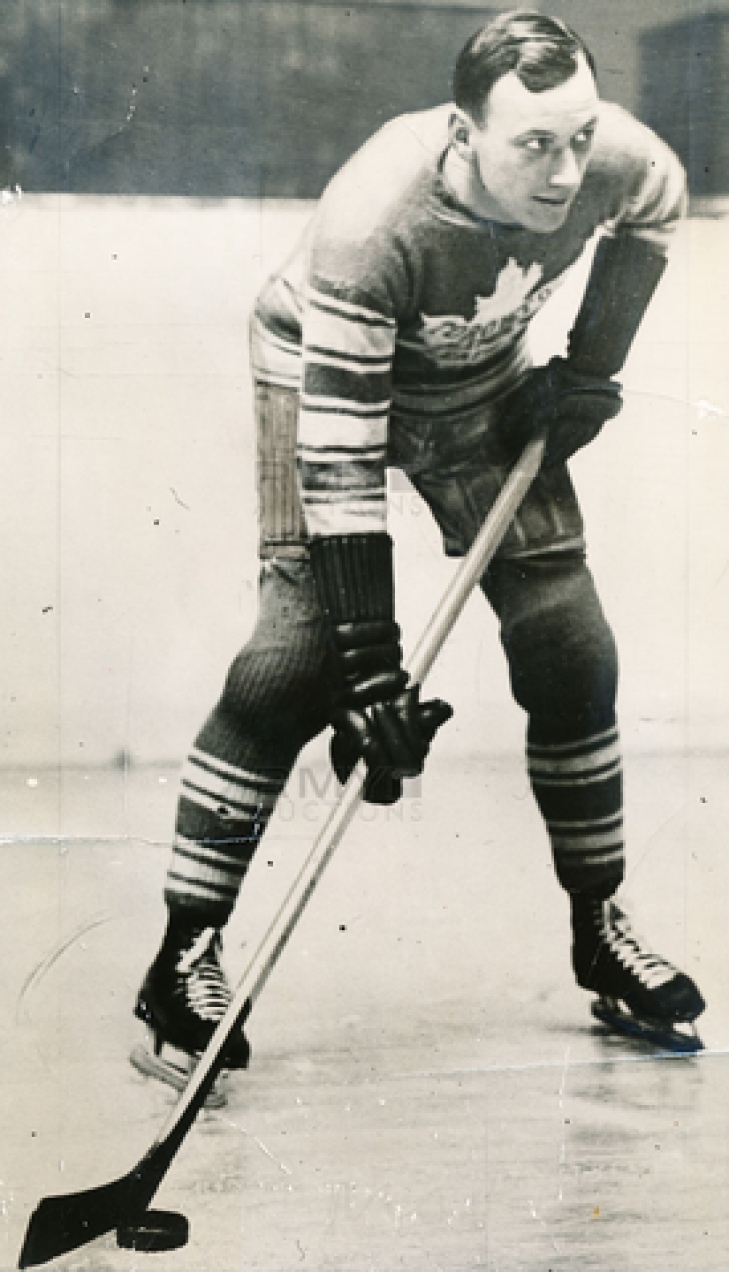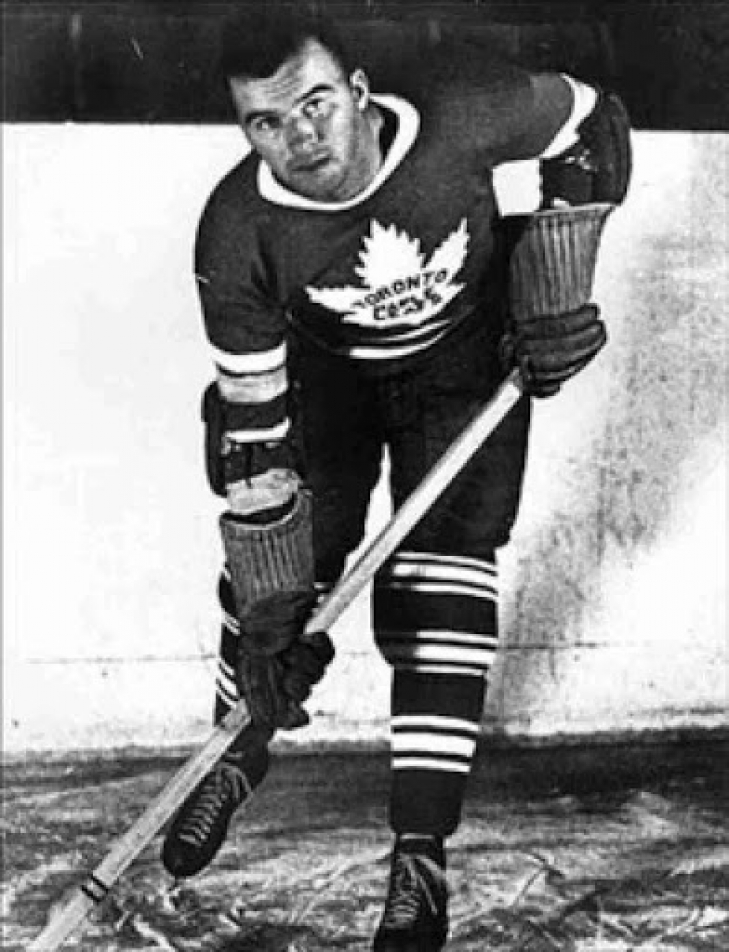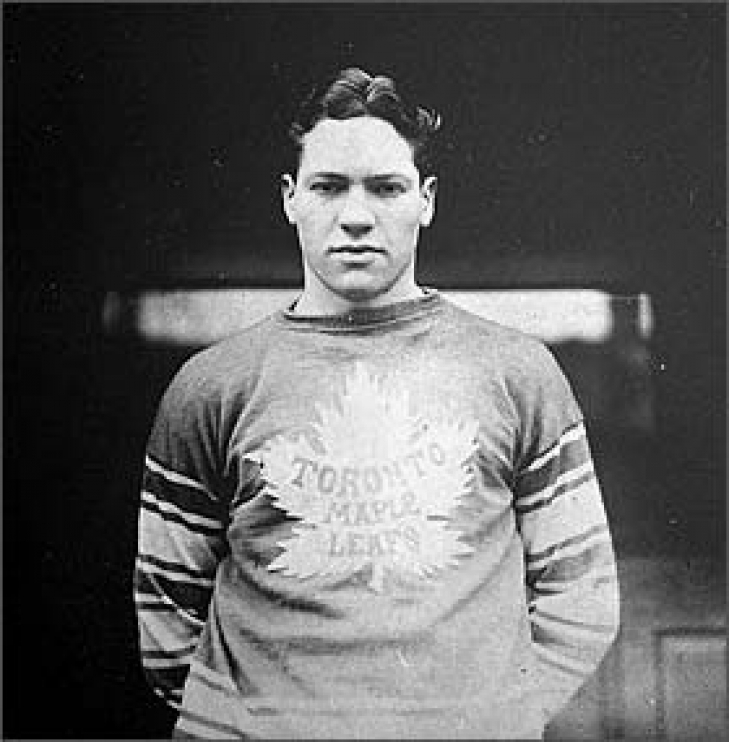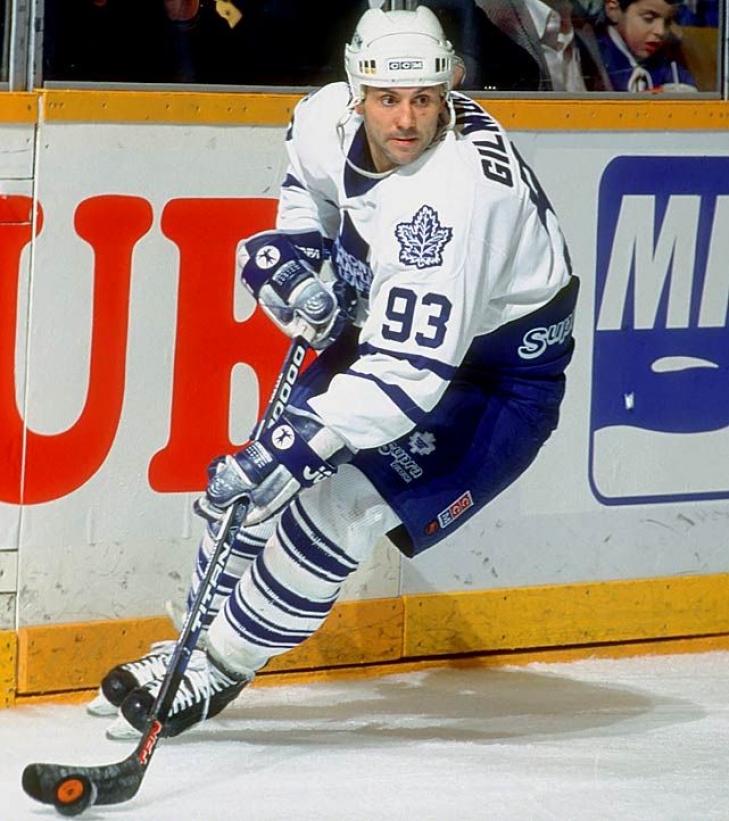
Committee Chairman
21. Ace Bailey
Irvine “Ace” Bailey was not planning to turn his hockey playing into a professional career, and in the 1920s, that was not considered a lucrative option. The Toronto St. Patricks saw an abundance of talent in Bailey, and he signed with them before the 1926/27 season.
Bailey was an instant star, utilizing his marksmanship and speed to become one of the premier snipers in hockey. Bailey would lead the NHL in Goals in 1928-29 (22) and Points (32), and he had two more 20-Goal/40-Point years, which was an impressive accomplishment back then.
On December 12, 1933, the Leafs were on the road against Eddie Shore and the Boston Bruins. During the game, the tenacious King Clancy checked Shore with brute force, leading the Bruin to seek vengeance. Shore got up, and with the Leafs advancing to the Boston zone, he used his stick to viciously trip Bailey (who he thought was Clancy), who thunderously fell to the ice head-first.
Bailey was not just knocked out cold; he was in a coma for ten days, of which it was thought he would never recover. Bailey came out of the coma, but his playing career was over. To help Bailey financially, an All-Star Game, the first of its kind in the NHL, happened in 1934, with Shore and Bailey shaking hands to start the game.
The Maple Leafs honored Bailey and made history in the process by becoming the first NHL team to retire a number when Bailey’s number 6 was retired.
Bailey was finally elected to the Hockey Hall of Fame in 1975.
20. Gordie Drillon
The professional hockey career of Gordie Drillon was relatively short, considering that he would eventually become a Hockey Hall of Famer, but he created an offensive strategy that would become a staple in the NHL.
Called up in 1936, Drillon was a Right Wing who used his size to position himself in front of the opponent’s net. Drillon redirected shots and tipped them into light the lamp. It worked, as Drillon led the NHL in Goals (26) and Points (52) in his second season (1937-38) and was a First Team All-Star. Drillon would also win the Lady Byng that year with only four Penalty Minutes accrued.
Drillon continued to dazzle offensively, earning First Team honors in 1938-39, and was a Second Team All-Star selection in 1941-42. With the Leafs he had four 20-Goal seasons, which was excellent in an era where they played less than 50 Games.
What Drillon failed at was defense, as he was not very committed to the back end. Drillon was a member of the Toronto team that won the 1942 Stanley Cup, but he saw less action in the second half of the series, where Toronto overcame a 3-0 deficit to Detroit. Drillon was shipped off to Montreal after the Cup win.
After one year with the Habs, Drillon joined the Canadian military to serve in World War II. While he returned to play hockey after the war was over, his skills were no longer good enough to play in the NHL.
Drillon entered the Hockey Hall of Fame in 1975, on the strength of his play in Toronto, which saw him average .93 Points per Game. His attention to defense may have been lacking, but his offensive innovation still resonates in hockey today.
19. Red Horner
Playing at Defense, Red Horner was an 11-year veteran of the National Hockey League, all of which was as a Toronto Maple Leaf.
Horner was a meat-and-potatoes type of player who had no grace on the ice but effortlessly found teammates whit precision passing. His true calling card was his toughness, as evidenced by leading the NHL in Penalty Minutes seven times. Horner helped the Maple Leafs win the 1932 Stanley Cup, and his rock-solid defensive skills were a huge asset to Toronto.
Horner was chosen for the Hockey Hall of Fame in 1965.
18. Doug Gilmour
Doug Gilmour was already an established star in hockey before he arrived in Toronto, as he had a 105-Point season with St. Louis, and he later helped the Calgary Flames win the 1989 Stanley Cup. While Gilmour did not win a Cup as a Maple Leaf, he became their leader and led them to the best success in years.
Gilmour was the best player in the ten-player trade he was involved in during the 1991-92 Season, and he brought a culture that immediately turned the team around. The following year, Gilmour had his best year in hockey, scoring a career-high 127 Points. Despite being an offensive dynamo, he was equally gifted on the defensive side, as he won the Frank J. Selke Trophy as the NHL's top defensive forward. Gilmour, who was second for the Hart, led the Leafs to the Western Conference Final, where they came close to upending Wayne Gretzky and the Los Angeles Kings. Toronto may not have made the Finals, but “Dougie” was installed as an iconic figure in the city.
Gilmour followed that with his second consecutive 100-Point year (111) and was fourth in Hart voting. This ended Gilmour's apex, but he was still a Point-per-game player, and the two-time All-Star averaged 1.15 Points per Game during his time in Toronto. That period ended when he was dealt to New Jersey in 1997, but he played one final game in Toronto in 2003, when he was reacquired at the trade deadline. His return to the Leafs was brief, as a collision tore his ACL, and he never played professional hockey again.
The Hockey Hall of Fame inducted Gilmour in 2011, two years after the Leafs elevated a banner in his honor. His number 93 was retired in the mass group in 2016.





